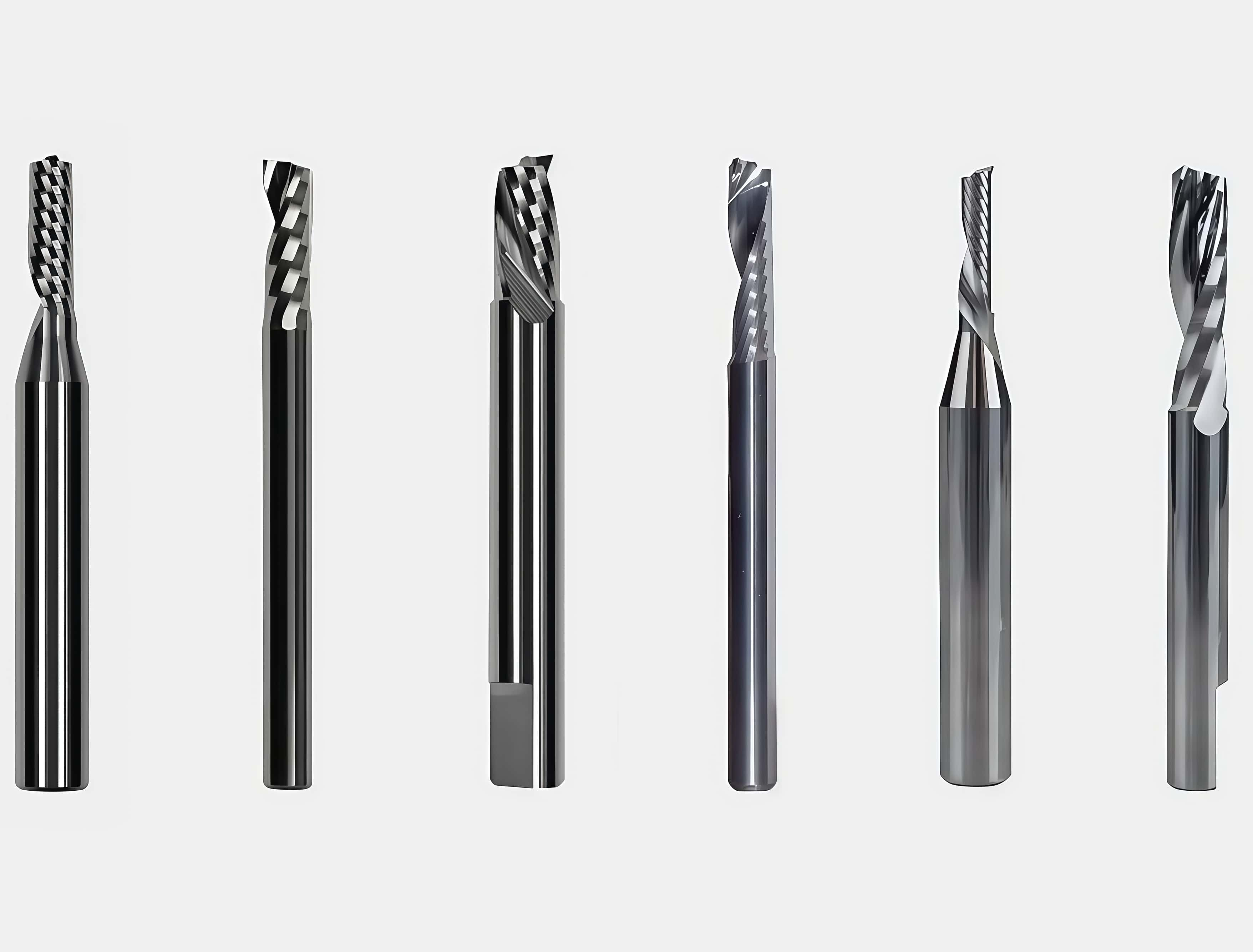Flatbed cutters featuring tangential or drag knife modules are an excellent way to streamline high-volume cutting operations. They are particularly effective for projects requiring precision cutting and finishing of materials such as vinyl, corrugated plastic, foam core, PVC, leather, banner material, fabrics, and various textiles.
By integrating an optional routing system with a Summa flatbed cutter, you can significantly enhance your cutting capabilities. This addition allows you to work with materials commonly used in sign production and other applications, such as Foamex, MDF, acrylic, MFC, aluminum, Dibond, foam sheet, carbon fiber sheet, plexiglass, Gatorfoam, Sintra, and plywood. These materials are ideal for creating items like architectural signs, wayfinding panels, and advertising displays.
To help you get the most out of your routing system and maintain a smooth and profitable workflow, we’ve compiled some practical tips on using router bits effectively.
Summa F Series with Router System: Key Considerations for Routing Bits
Before beginning any routing tasks, carefully select the appropriate routing bit. Routing bits vary widely in their specifications, including flute type, coating, purpose, and shape. Understanding these differences is crucial to efficiently tackle specific jobs. Summa provides a selection of 32 distinct router bits designed to cover the majority of materials, cutting profiles, and speeds commonly encountered in the sign and specialty cutting industries.
Here are some essential factors to keep in mind when choosing the right bit for your project:
1. Multi-Purpose vs. Material-Specific Bits
Router bits typically fall into two categories: multi-purpose or material-specific.
- Multi-Purpose Bits: These are versatile and suitable for most materials and general cutting tasks. While they generally provide decent cut quality and durability, they may not deliver the best finish for certain materials or precise jobs. Additionally, their lifespan may be shorter compared to material-specific bits.
- Material-Specific Bits:Designed for optimal performance on specific materials, these specialized bits offer superior cutting quality and extended durability. With advanced surface geometry and coatings tailored to particular materials, they ensure smoother finishes and longer lifespans.
A common mistake operators make is relying too heavily on multi-purpose bits across multiple substrates. To minimize wear and tear while maximizing efficiency, dedicate each bit to a single substrate type and switch bits accordingly. This practice promotes even wear and reduces replacement costs in the long run.
2. Upcut vs. Downcut Bits
Router bits also differ based on the direction in which their spiral flutes transport debris during cutting: upcut or downcut.
- Upcut Spiral Bits:These are widely used because they effectively clear debris by directing it upward and away from the cutting path. This helps maintain a clean surface finish during operation.
-Downcut Spiral Bits: These are better suited for smaller or intricate pieces as they push cut debris downward. Downcut bits also reduce material movement during cutting, minimizing the risk of losing parts or vacuum interference. Another advantage is that they preserve the upper surface of the material much better than upcut bits—essential for projects where surface quality is critical along the cut lines.
3. Single-Flute vs. Multi-Flute Bits
The choice between single-flute and multi-flute bits often hinges on chip load considerations. Chip load refers to the ability of a bit to cut and clear material effectively during operation. It is influenced by factors such as rotational speed and feed rate (cutting speed).
- Single-flute bits typically excel at clearing larger chip sizes due to their wide flute size.
- Multi-flute bits are better suited for fine finishes or working with harder materials but may require adjustments to achieve optimal chip load balance.
Each routing bit has a defined 'chip load' specification tailored to specific materials, ensuring optimal performance and extended bit life when properly matched.
Using these guidelines to select and maintain the right router bit can help extend tool lifespan, improve finish quality, and increase operational efficiency—all critical factors for scaling your business into new markets profitably.
When it comes to choosing the right router bit, single-fluted bits are often seen as a reliable and user-friendly option. Their straightforward design allows them to efficiently cut into materials and immediately eject chips of a predetermined size upon contact. By utilizing a single-fluted bit at an appropriately set RPM (Revolutions Per Minute), operators can achieve cuts at a consistent speed that corresponds to the chip load—a fundamental factor in determining performance.
The question then arises: when should multi-fluted bits be utilized? The simple answer is when faster cutting speed is desired. Multi-fluted bits, such as those with two flutes, essentially double the active cutting surfaces impacting the material with every rotation of the bit, significantly boosting cutting efficiency. Additionally, they produce smaller chips per rotation due to their increased frequency of impact. However, not all materials respond the same way—trial and error may be required to assess whether single or multi-fluted bits provide optimal chip clearance, since certain materials tend to clog more easily when using multi-fluted designs.
Ultimately, selecting the right bit for a particular task involves balancing three key factors: cutting speed, chip clearing, and the precision or cleanliness of the cut.
The common misconception regarding router performance revolves around equating high motor power (watts) with faster cutting speeds, which is not necessarily accurate. Achieving higher cutting speeds relies more on RPM rather than raw motor power. Faster bit rotations result in more frequent engagement between the cutting edge and the material, expediting the cutting process. The size—or diameter—of the router bit plays a pivotal role in this equation, as larger bits can accelerate cutting velocity but are less capable of producing intricate or detailed cuts. If the router has sufficient power, increasing the bit size is an effective strategy for enhancing speed, provided that the trade-off in detail accuracy is acceptable.
Several practical tips can optimize router performance:
- Use larger diameter bits for faster routing, while resorting to smaller bits when fine detail work is required.
- Minimize vibrations by selecting a bit length that closely matches the thickness of the material being processed.
- Limit depth per pass to a maximum equal to the diameter size of the bit for standard routers, or up to 1.5 times the diameter for High Frequency (HF) routers.
- Ensure that the total thickness of media does not exceed three times the diameter of the chosen bit.
For those seeking versatility across diverse applications, Summa’s multipurpose router bits are built to handle a range of materials such as aluminum composites, wood products, laminates, and PVC. Some popular options include:
- 500-9850 D3/3 L38/11 1FL UC MP (3x)
- 500-9852 D4/4 L50/12 1FL UC MP (3x)
- 500-9854 D6/3 L50/6 1FL UC MP (3x)
- 500-9872 D3/3 L38/6 1FL UC MP (3x)
- 500-9881 D6/6 L50/12 1FL DC MP (3x)
For applications requiring enhanced speed and durability, coated multi-purpose bits offer distinct advantages. They can process aluminum composites up to 4mm thick in a single pass at speeds reaching 150 mm/s. Commonly recommended coated options include:
- 500-9865 D6/6 L50/12 1FL UC BAL CT (3x)
- 500-9869 D6/2 L50/6 1FL UC CT (3x)
When working specifically with acrylics, Summa offers specialized router bits designed for clean and efficient cuts in these materials:
- 500-9882 D6/2 L50/6 1FL UC A (3x)
- 500-9885 D6/4 L50/8 1FL UC A (3x)
- 500-9887 D6/6 L50/12 1FL UC BAL A (3x)
Specialty router bits are another category tailored for specific tasks:
- Compression Bits: These versatile tools feature an up-cut and down-cut design perfect for wood processing. Example: 500-9864 D6/6 L50/22 2FL UC/DC (2x).
- V-Groove Bits: Best suited for working on ACB materials. Example: 500-9863 D6/10 L50/6 V Groove 2FL 90°(2x).
- Polishing Bits: Exclusively designed for use with High Frequency Routers, these bits provide superior surface finish in acrylics. Example: 500-9859 D6/6 L, ideal for refining cuts.
The choice of router bit largely depends on the specific needs of each project—balancing speed, material characteristics, cut precision, and ensuring effective chip management remains critical for achieving desired outcomes
PREV : How to Use the Slitting Machine Blades? NEXT : Esko Kongsberg Aristo Summa EcoCam Stepcraft MultiCam Oscillating Tangential Knife OTK






